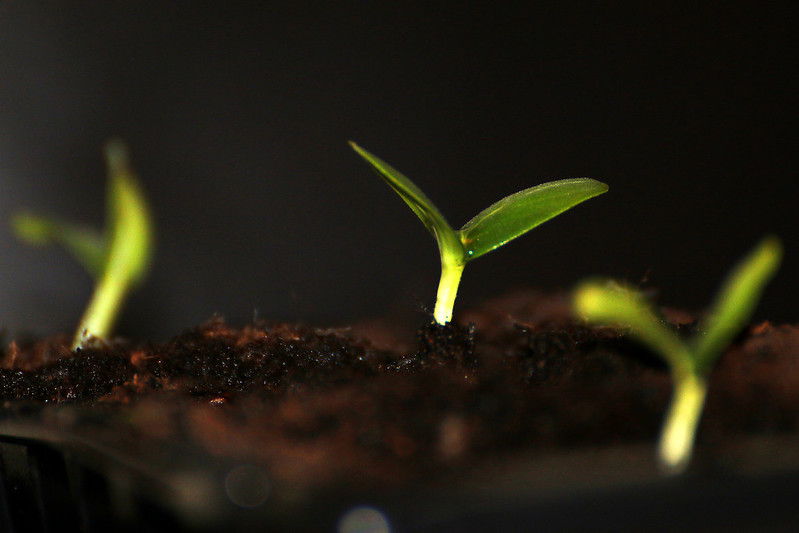
Flickr via Kevin Doncaster
Whenever I experiment with something new during the seed starting season, I feel incredibly anxious. What if it goes wrong? What if I end up with unhealthy starts? Believe me. I’ve made my fair share of mistakes that have resulted in disaster.
I tried using jiffy pellets one year, and my seedlings were stunted. Another year, I tried plastic pots. It was a slightly pricier endeavor than the peat pellets, but I hoped that it would result in more vigorous seedlings. It ended up being a frustrating experience. The pots were flimsy, and many of my seedlings became root-bound.
Another year, everything was going great, but the humidity levels in my basement grow space were less than ideal. I ended up trashing most of my seedlings because of damping off.
I’ve done things to kill seedlings, and I’ve had things happen that were totally outside of my control. Needless to say, I was really nervous about trying something new, but I was excited to see if it would make this part of the gardening process a bit easier and a bit kinder on my wallet.
Creating Soil Block
Last weekend, after a particularly long day and a week that felt like it was never going to end, I finally decided to start some seedlings—early March is the time to start tomatoes, peppers, and eggplants if you’re in Zone 5.
I was exhausted but determined to get going. Nightshades are notoriously slow to germinate, so I didn’t want to wait any longer.
I dumped some soil mix into a bucket (I bought a specialty sterile mix this year because honestly, a few extra bucks seemed worth it to avoid the massacre of seedlings I dealt with last spring) and added water until I got a goopy consistency.
What I Learned
In retrospect, I don’t think I added enough water. Lesson learned. For the next batch of seedlings, I’ll aim for a slurry and not a goop.
Soil blocking was less messy than I envisioned, but you definitely get your hands dirty! I rolled up my sleeves and pushed the metal blocking tool into the soil goop until there was water seeping out a bit.
Then, I popped the perfectly formed blocks onto my tray.
I was amazed at how well-formed the blocks were and still are. A few are crumbling slightly, but all in all, they’re doing fine.
https://www.instagram.com/p/B9Nma-3DeSG/
I definitely have to work on my technique—the mix should have more water and I need to compress the blocks a bit more, too—but I feel confident that this is a method I’ll be using from now on. I’m so grateful not to have to deal with pots ever again. What a relief!
Looking Forward
I’ve been misting the blocks and watering from underneath (something I usually do with all my plants) and I’m eager to see how things go when it’s time to transplant the seedlings. Though perhaps that’s thinking too far ahead. Maybe I’ll just wait and see if anything actually sprouts!

Steph Coelho is a freelance writer gardening in zone 5b. She is a certified Square Foot Gardener and has taught various garden-related workshops. When she’s not digging in the dirt or writing, she’s cooking up fresh produce, running, or listening to her favorite podcasts.
Leave a Reply